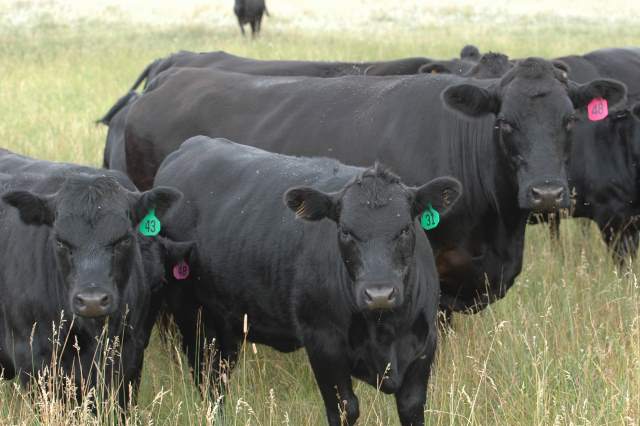February 23, 2016

Bull sale season is hard upon us and cattle producers are pouring over sale catalogs in search of the next great hope, or in many cases, hopes plural. And while that’s an essential and often fun and challenging part of the whole process of selecting your next calf crop and calf crops for many years to come, it’s actually the second step in the process, says Bob Weaber, Extension cow-calf specialist at Kansas State University.
Step number 1? Evaluate your breeding system and breeding objectives, Weaber says. “What is it that we need to do in our system to improve and enhance profitability? What considerations and constraints do we have in the system, how might we optimize it to make better use of maternal heterosis in our cows and build market-targeted calves downstream?”
While spending a little skull-session time pondering those ideas is important, there’s another consideration to keep in mind when mining the data in the sale catalog for the perfect bull—and that’s the “perfect bull,” the bull that is strong both in maternal and market traits, is hard to find. And if you do, bring your checkbook because everybody else wants him, too.
“One of the most common complaints I hear from producers is it’s getting really tough to find bulls that do everything I want in terms on making cows and everything I want in terms of making calves that fit the marketplace and are desirable downstream in the value chain,” Weaber says. So his advice? Don’t try.
Instead, he says to think about how you can do a better job of making individual breed or sire selection decisions to target specific parts of your business. “What I’m advocating is we start thinking about separating our maternal and terminal mating decisions.”
Weaber fully realizes that not all operations will be able to do that easily, particularly operations that run fewer cows. There, he says, you have to make some trade-offs, most likely toward the side of choosing calving ease and maternal traits over performance traits.
That’s because operations of that size are probably going to use bulls on both heifers and mature cows. “We have to be willing to give up lots of territory in terms of performance when we use calving-ease bulls on mature cows,” he says.
For operations with the cow numbers and infrastructure, however, he says combining a rotational crossbreeding system to capture maternal heterosis is worth considering. And that gets back to what he calls the $500-an-hour work you do in your operation to understand where the profit is generated in your system and how you can use heterosis and sire selection to emphasize that.

BEEF Seedstock 100 List
Looking for a new seedstock provider? Use our UPDATED Seedstock 100 listing to find the largest bull sellers in the U.S. Browse the list here.
“Ultimately, we have to align the traits we use in selection with our marketing endpoints and our breeding objectives. So think about how do I balance traits that I put into those genetics based on my marketing endpoint? Think about what your marketing objective is and work back from that.”
You might also like:
Enjoy a laugh! Holmes and Fletcher Classic Cartoons
13 things to consider to holistically manage your cowherd
So you want to be a sustainable rancher? 7 steps to make it happen
Can you use snow as a water resource for your cattle?
Wendy's addresses antibiotic use in beef production
9 new pickups for the ranch in 2016
You May Also Like



